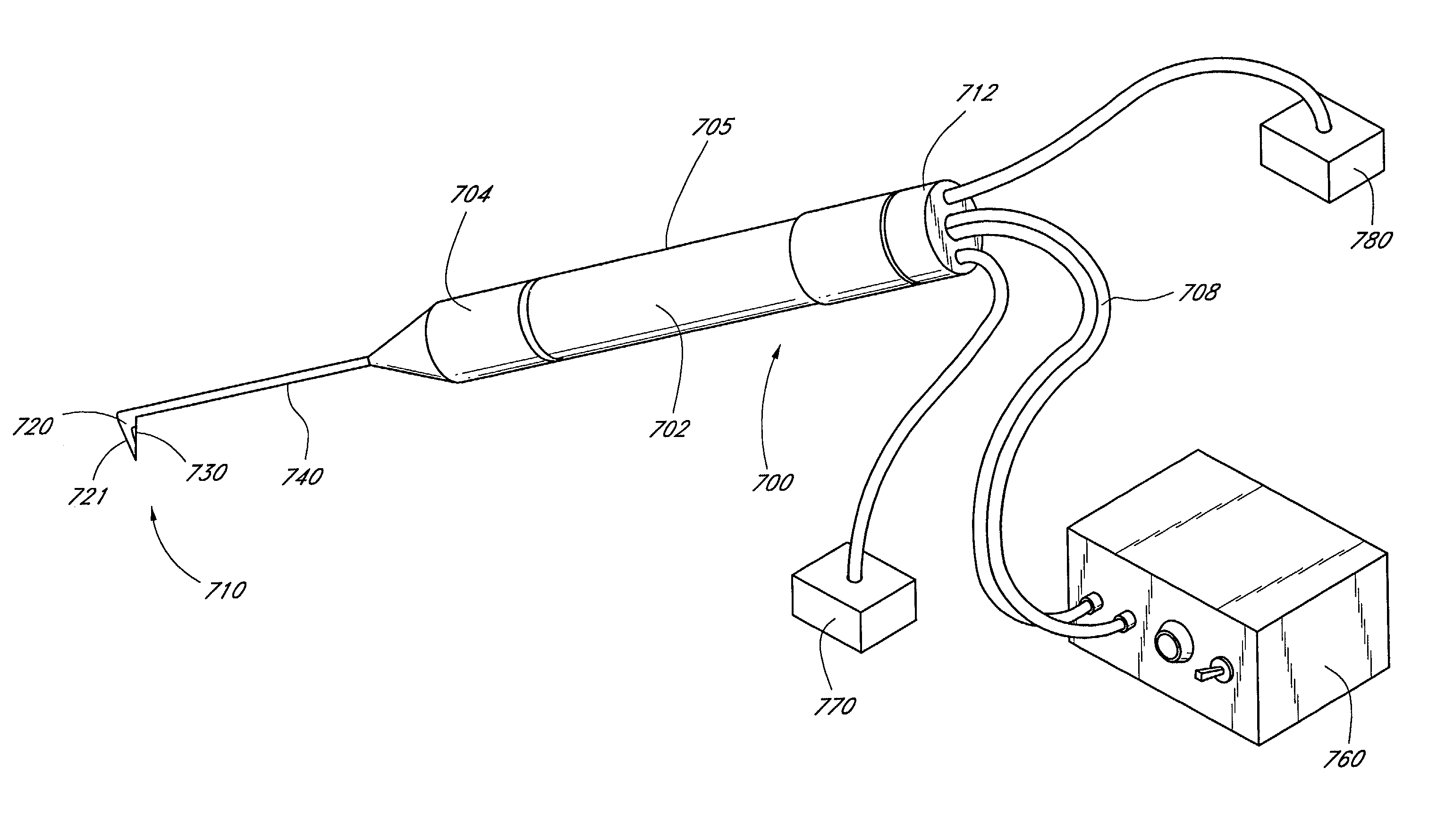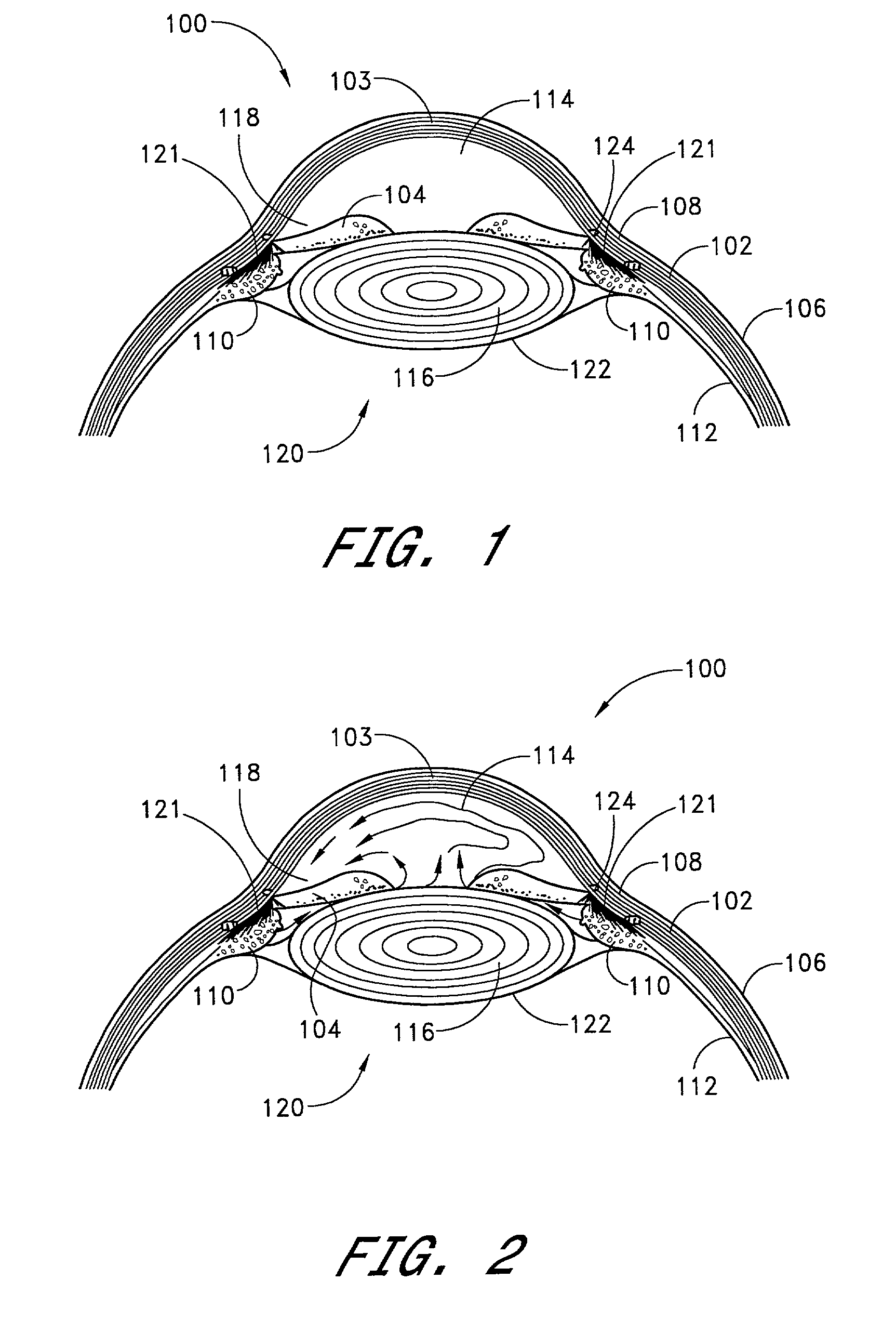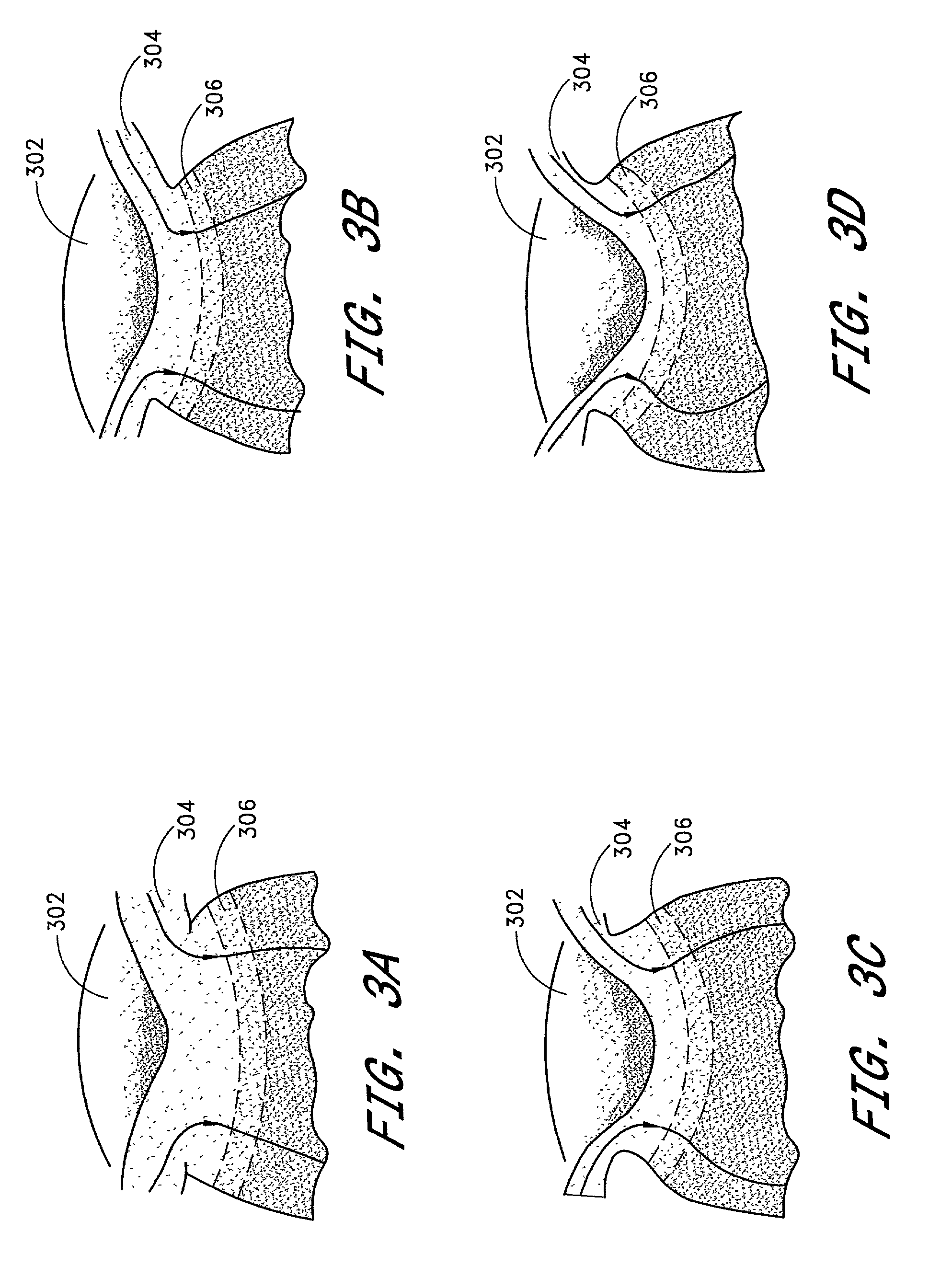Minimally invasive glaucoma surgical instrument and method
a glaucoma and minimally invasive technology, applied in the field of new glaucoma surgical instruments and methods, can solve the problems of disturbing the dynamics of aqueous humor, particularly vulnerable nerves to pressure, and obstruction of trabecular meshwork, and achieve the effect of simple glaucoma treatmen
- Summary
- Abstract
- Description
- Claims
- Application Information
AI Technical Summary
Benefits of technology
Problems solved by technology
Method used
Image
Examples
Embodiment Construction
[0071]Referring to FIG. 1, relevant structures of the eye will be briefly described, so as to provide background for the anatomical terms used herein. Certain anatomical details, well known to those skilled in the art, have been omitted for clarity and convenience.
[0072]As shown in FIG. 1, the cornea 103 is a thin, transparent membrane which is part of the outer eye and lies in front of the iris 104. The cornea 103 merges into the sclera 102 at a juncture referred to as the limbus 108. A layer of tissue called bulbar conjunctiva 106 covers the exterior of the sclera 102. The bulbar conjunctiva 106 is thinnest anteriorly at the limbus 108 where it becomes a thin epithelial layer which continues over the cornea 103 to the corneal epithelium. As the bulbar conjunctiva 106 extends posteriorly, it becomes more substantial with greater amounts of fibrous tissue. The bulbar conjunctiva 106 descends over Tenon's capsule approximately 3 mm from the limbus 108. Tenon's capsule is thicker and ...
PUM
 Login to View More
Login to View More Abstract
Description
Claims
Application Information
 Login to View More
Login to View More - R&D
- Intellectual Property
- Life Sciences
- Materials
- Tech Scout
- Unparalleled Data Quality
- Higher Quality Content
- 60% Fewer Hallucinations
Browse by: Latest US Patents, China's latest patents, Technical Efficacy Thesaurus, Application Domain, Technology Topic, Popular Technical Reports.
© 2025 PatSnap. All rights reserved.Legal|Privacy policy|Modern Slavery Act Transparency Statement|Sitemap|About US| Contact US: help@patsnap.com



